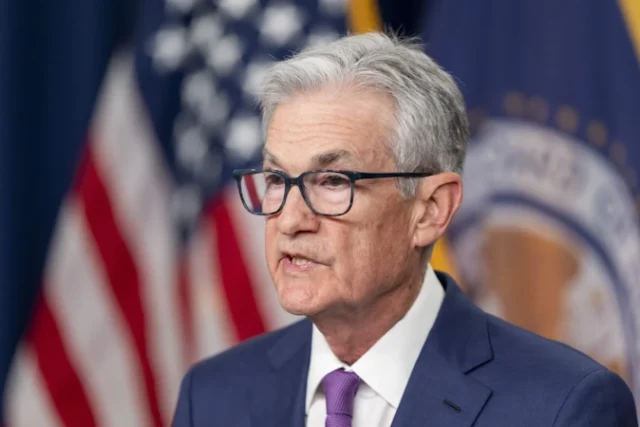
Key takeaways
- Even though the Federal Reserve hasn’t touched interest rates since July, consumers are still feeling the impact of higher interest rates, with mortgage rates, auto loans and home equity lines of credit (HELOC) holding at the highest levels in more than a decade.
- Savers are benefiting from the current high-rate environment, as they can easily earn 5 percent or more in interest on their cash if they shop around.
- Borrowing costs and savings yields are already edging lower as it looks like that the Fed will cut interest rates this year, underscoring the importance of shopping around for the best rates.
The Fed’s latest decision means the Fed’s key benchmark borrowing rate will stay in its current target range of 5.25-5.5 percent, the highest level since 2001.
After topping 8 percent for the first time since 2000, mortgage rates have retreated from those highs to just below 7 percent, the latest data from Bankrate shows. Yet, before the Fed began raising interest rates in the post-pandemic era, it’s a level that would-be homebuyers haven’t seen since 2009. Even forms of consumer credit once seen as low-cost debt — such as home equity lines of credit — are now hitting the highest level in over a decade.
There are also some bright spots to paying more for money this year. For starters, savers can earn 5 percent or more on their cash if they shop around, Bankrate data shows. It’s also now easy to find a yield that eclipses inflation if you keep your cash in a high-yield savings account, meaning your money isn’t losing purchasing power just by sitting on the sidelines.
But the ultimate question is when the Fed will start to begin to cut interest rates. Fed officials might not be in a rush to cut interest rates, even as inflation slows, out of fear that price pressures may accelerate. Yet, interest rates — and savings yields — are already starting to drift lower, now that lower rates in 2024 appear to be a possibility.
There is nothing in the economy compelling the Fed to cut rates as soon as March – which investors have been pinning their hopes to – so expect the Fed to push back by emphasizing that inflation still needs to show further improvement.— GREG MCBRIDE, CFA | BANKRATE CHIEF FINANCIAL ANALYST
Here’s your 11-step plan for taking charge of your wallet after the Fed’s latest rate decision.
1. Get a snapshot of your personal finances
In today’s high-rate era, consumers should get an idea of where they are with their personal finances, including how much debt and savings they have.
Print out statements from any account housing liquid cash — or money you could withdraw without penalty. Those are most likely savings accounts, but they could also be funds in a money market account or no-penalty CD. Even better, note each account’s annual percentage yield (APY).
Next, list your debt, including your outstanding balance and the annual percentage rate (APR) you’re charged. Keep tabs on whether that debt has a fixed or variable rate, and note how much interest you pay per month.
Then, keep track of the income and expenses flowing in and out of your budget each month.
The goal of taking a hard look at your personal finances is to hopefully inform you of how fragile you might be in a rising rate environment. You might also be able to identify easy budget cuts or debt to eliminate. Individuals who live outside of their means and borrow to fund their expenses will feel squeezed in a rising-rate environment.
2. Know what’s good debt and bad debt — and eliminate the latter
Consumers with variable-rate and high-interest debt should take careful note. Those borrowers are hit hardest in a high-rate environment, and 11 rate hikes over 20 months have brought punch after punch.
“Anything you can do to pay off your balances faster and make adjustments in your budget, so you don’t have to rely on your lines of credit and carry debt from month to month, that’s the best strategy,” says Bruce McClary, spokesperson for the National Foundation for Credit Counseling.
High-interest debt commonly comes from a credit card. Even when the Fed’s rate held near zero, the average credit card rate hovered slightly higher than 16 percent, according to Bankrate data. If you don’t pay off your balance in full each billing cycle, that’s likely costing you hundreds — if not thousands — of extra dollars a month.
Consider consolidating your outstanding balance with a balance-transfer card to help chip away at your high-cost debt, and shop around for the best offer on the market. Most cards start borrowers with a rate as low as zero percent for a specified number of months before transitioning to the regular APR. The economy’s current prospects of avoiding a recession are also good for borrowers with credit card debt: Issuers are less inclined to take their consolidation offers off the market.
Meanwhile, one benefit to tracking how much you pay in interest each month is, it can also help you determine whether you’d save money by transferring your debt — a process that comes with fees.
As rates rise, consumers would be wise to eliminate any variable-rate debts by refinancing into a fixed rate. If your credit score has improved in recent months, you might also be able to find a better rate on the market than the one you’re currently paying.
“You don’t want to be a sitting duck for higher interest rates on your credit card or home equity line of credit,” Bankrate’s McBride says. “Fixed-rate debts like mortgages and car loans that are low and mid-to-single-digit rates — there’s not a whole lot of incentive to pay ahead.”
That’s because the relatively low-cost debt can be a strong hedge against inflation. Simply put, you might be better off putting that money toward other avenues that meet your financial goals — such as saving or investing — than paying it off.
3. Shop around for the most competitive borrowing rates
Shopping around will be one of the most important steps a consumer can take in a high-rate environment.
In addition to climbing mortgage rates, home equity loans and credit cards, car loan rates have surged to the highest level since the Great Recession.
The new landscape signals an end to the record-low rates of the coronavirus pandemic era — and even the lower rates borrowers were accustomed to in the decade after the financial crisis. Yet, some lenders might be more inclined to offer better deals than others to lure new customers in a slower market. Financial experts typically recommend comparing offers from at least three lenders before locking in a loan.
Another avenue where noting rates might be prudent: private student loan borrowers. Doing the same kind of comparison shopping might help you score the lowest rate possible — lowering your monthly payment and helping you get out of debt quicker.
Federal student loan borrowers, however, will want to think twice about refinancing their debt into a private loan. Doing so could mean giving up on important perks, such as hardship or unemployment forbearance, income-driven repayment plans and other major programs for federal student loan borrowers. Federal student loans also now mostly come with fixed rates.
This article originally appeared here and was republished with permission.












